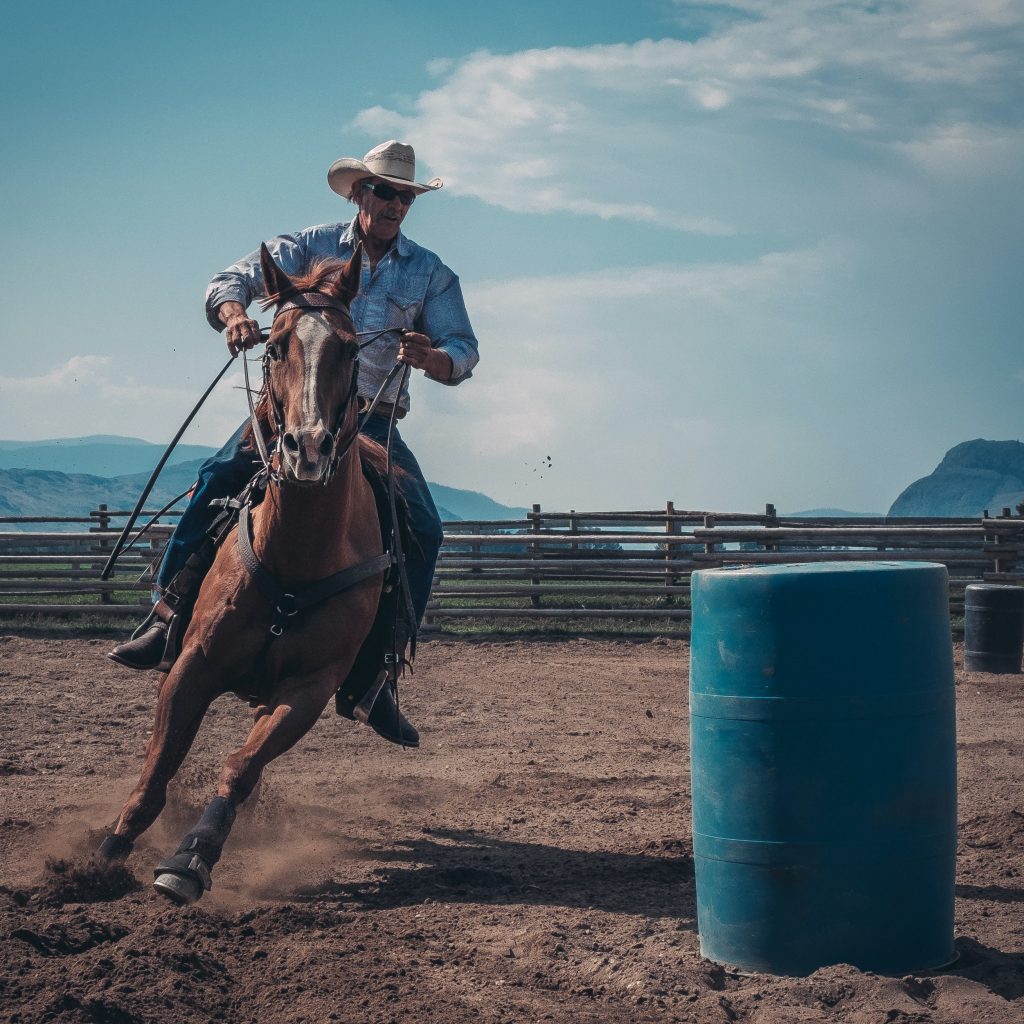In the equestrian world today, it is common for English riders to wear riding helmets as a safety precaution. However, Western riders are often seen without helmets. There are a variety of reasons that influence Western riders’ reluctance to use helmets. Let’s dive into these factors and analyze whether these reasons hold merit as well as discover why Western riders should wear helmets.
Tradition and Fashion
One significant reason why Western riders tend to forego wearing helmets is simply the tradition of wearing cowboy hats. Peer pressure and fashion play a large role in this choice. Additionally, comfort is often said to be a contributing factor. Helmets have a reputation for being hot and lacking a wide enough brim to provide shade for the face and shoulders. However, there are a wide variety of helmet options available today that offer suitable ventilation with options to add visors or full brims.
Perceptions of Invincibility and Stoicism
Younger Western riders are considered cowboys or cowgirls, and this title can give one a sense of invincibility. This leads some Western riders to believe head injuries only happen to other, less experienced riders. They may have less concern for their safety. Meanwhile, older riders who have spent a lifetime riding helmetless may have engaged in risky behavior, like smoking. Some riders in this category may adopt a fatalistic way of thinking, believing that accidents are inevitable, and head injuries from being thrown from a horse are just a risk you take when you get in the saddle.
Are These Justifiable Reasons?
A simple, straightforward answer would be, “No!”. Tradition should not compromise one’s safety. While the cowboy hat holds cultural significance for Western riders, it is vital to consider the growing overlap between Western and English riding practices.
For example, many Western riders now include posting trot, a technique mainly associated with English riding. Simultaneously, English riders are discovering comfort in sitting trot. These changes shed light on the practical adjustments made by riders from both disciplines. Similarly, choosing to wear a helmet should be seen as a useful measure. Many English riders embrace the importance of head protection. It should be equally doable for Western riders.
Is Finding a Suitable Helmet Challenging?
The search for a comfortable helmet usually involves trial and error. While comfort is important, it can be addressed by finding the right fit. Visiting reputable tack shops and trying on different helmets is essential. Ask for advice from other equestrian friends who wear helmets. Choosing a helmet that provides full coverage to the back of your head is vital, as head injuries from riding frequently occur here.
Taking Risks: Neither Smart Nor Stylish
Although many young people believe they are indestructible and engage in risky activities, this belief is not reality. Traumatic brain injuries are prevalent across all age groups. According to statistics from the Centers for Disease Control, young children, older teens (ages fifteen to nineteen), and seniors are most susceptible to traumatic brain injury.
Head injuries are the most common type of injury experienced by equestrians and the leading cause of horseback riding-related deaths. However, being thrown from a horse without wearing a helmet does not always result in death; it can lead to lifelong disabilities. Western riders should wear helmets because no one is 100% safe from the risks associated with horseback riding.

